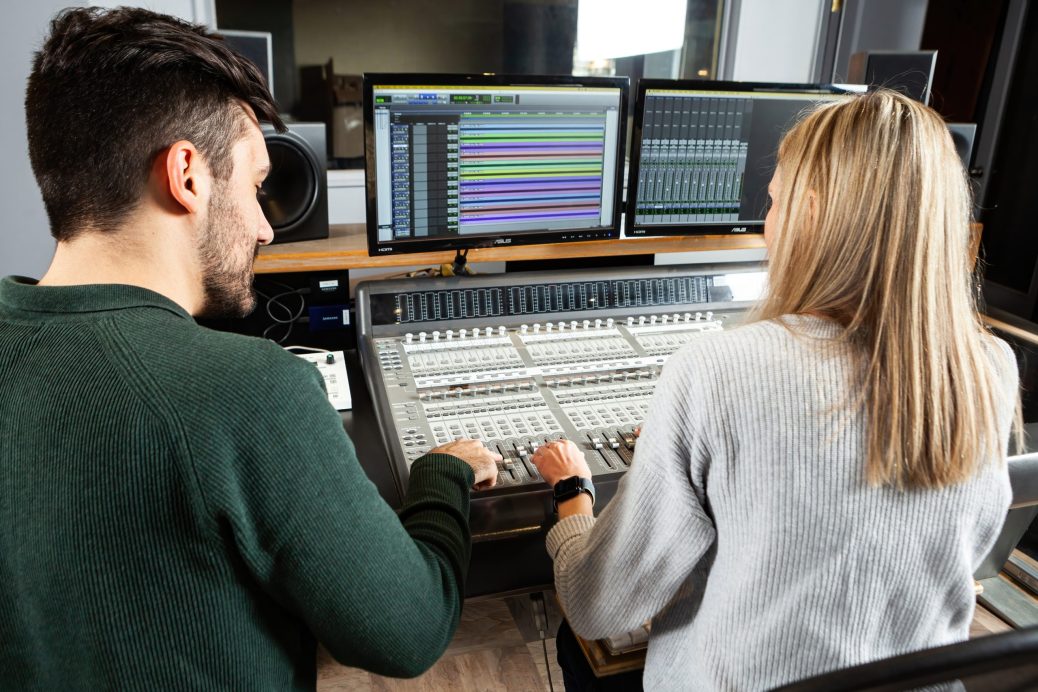In the world of audio production, capturing pristine on-location audio is essential for creating high-quality content.
In this article
- The Foundation of Quality Audio: Preparation
- Selecting the Right Microphone
- Wind Protection and Deadcat
- Managing Background Noise
- Monitoring and Testing
- Recording Techniques
- Post-Production Enhancement
- Conclusion
Whether you’re a filmmaker, podcaster, journalist, or sound engineer, achieving excellent audio quality is paramount.
Sign Up for Free Today
Find the perfect voice for your job today, or sign up as a talent to start booking voice over work on Voices.
We understand the importance of delivering crystal-clear, professional sound, no matter where you’re recording.
In this blog post, we’ll share valuable tips and techniques to help you capture pristine on-location audio every time.
The Foundation of Quality Audio: Preparation
Before delving into the technical aspects of recording audio on-location, it’s crucial to emphasize the significance of preparation. Planning ahead can make the difference between a successful recording and a frustrating experience:
- Scouting the Location: Visit the recording location in advance, if possible. Take note of any potential noise sources or acoustical challenges, and plan your setup accordingly.
- Check the Weather: If you’re recording outdoors, be mindful of the weather forecast. Rain, wind, or extreme temperatures can impact your equipment and audio quality.
- Equipment Checklist: Create a checklist of all the equipment you’ll need. Double-check that you have spare batteries, cables, and any necessary accessories.
- Collaborative Communication: If you’re working with a team, ensure everyone is on the same page regarding the recording plan. Clear communication is key to a smooth operation.
Selecting the Right Microphone
Choosing the right microphone for your on-location recording is a critical decision. The microphone you select can greatly affect the quality of your audio.
Here are some microphone options to consider:
- Shotgun Microphone: Shotgun microphones are highly directional and excel at capturing audio from a specific direction while rejecting background noise. They are ideal for recording dialogues and interviews in noisy environments.
- Lavalier Microphone: Lavalier (or lapel) microphones are small and discreet, making them perfect for on-camera talent or interviews. They can be wired or wireless, depending on your needs.
- Handheld Microphone: Handheld microphones are versatile and easy to use. They are great for capturing audio during interviews, live events, or performances.
- Ambient Microphone: If you want to capture the ambiance of a location, consider using an ambient or stereo microphone. These mics can add depth and realism to your recordings.
Wind Protection and Deadcat
Wind can be a major enemy of audio quality when recording on location.
Even a gentle breeze can create unwanted noise on your recordings. Invest in wind protection accessories like foam windscreens or “Deadcats” (windjammer covers) to combat this issue. These can significantly reduce wind noise and help you capture clean audio.
Managing Background Noise
Background noise can be a significant challenge when recording on location. It’s essential to minimize unwanted noise as much as possible. Here are some strategies to consider:
- Select Quiet Locations: Whenever possible, choose recording locations away from noisy traffic, construction, or other disruptive elements.
- Use Sound Blankets: Sound blankets or moving blankets can help reduce reflections and absorb ambient noise.
- Time Your Recordings: Plan your recording sessions during times when ambient noise is at its lowest, such as early mornings or late evenings.
- Noise Gates: If you’re recording in a controlled environment, consider using noise gates to reduce background noise automatically during silent moments.
Monitoring and Testing
Don’t underestimate the importance of monitoring your audio during on-location recordings.
Use headphones to monitor the live audio feed and ensure everything sounds as it should. Test your equipment before the actual recording, and make any necessary adjustments.
This proactive approach can save you from unexpected audio issues later.
Recording Techniques
Now that you’ve set up your equipment and minimized background noise, let’s explore some recording techniques for capturing pristine audio:
- Proximity: Ensure your microphone is positioned appropriately from the sound source. Experiment with microphone placement to find the sweet spot for optimal sound quality.
- Levels and Gain: Keep an eye on your audio levels and avoid clipping (distortion caused by recording at too high a level). Adjust the gain settings on your recorder or mixer as needed.
- Room Tone: Always record a few seconds of ambient sound from your location. This “room tone” can be used in post-production to smooth out edits and transitions.
Post-Production Enhancement
Even with the best on-location recording practices, some post-production work may be necessary to achieve pristine audio.
Here are some common post-production techniques:
- Noise Reduction: Use noise reduction software to reduce background noise further if necessary. Be cautious not to overdo it, as excessive noise reduction can degrade audio quality.
- Equalization (EQ): Use EQ to adjust the tonal balance of your audio. This can help remove unwanted frequencies and enhance clarity.
- Compression: Apply gentle compression to even out the dynamic range of your recordings. This can make the audio sound more polished and consistent.
- Editing: Carefully edit and arrange your recordings to eliminate mistakes, pauses, and other imperfections.
Conclusion
Capturing pristine on-location audio is a skill that requires both technical knowledge and practical experience.
By preparing diligently, selecting the right equipment, managing background noise, and employing effective recording techniques, you can consistently achieve the highest level of audio quality.
Remember that post-production enhancements should be used sparingly to preserve your recordings’ natural and authentic sound.
Whether you’re a seasoned professional or just starting, these tips and techniques can help you capture pristine on-location audio every time.

Leave a Reply